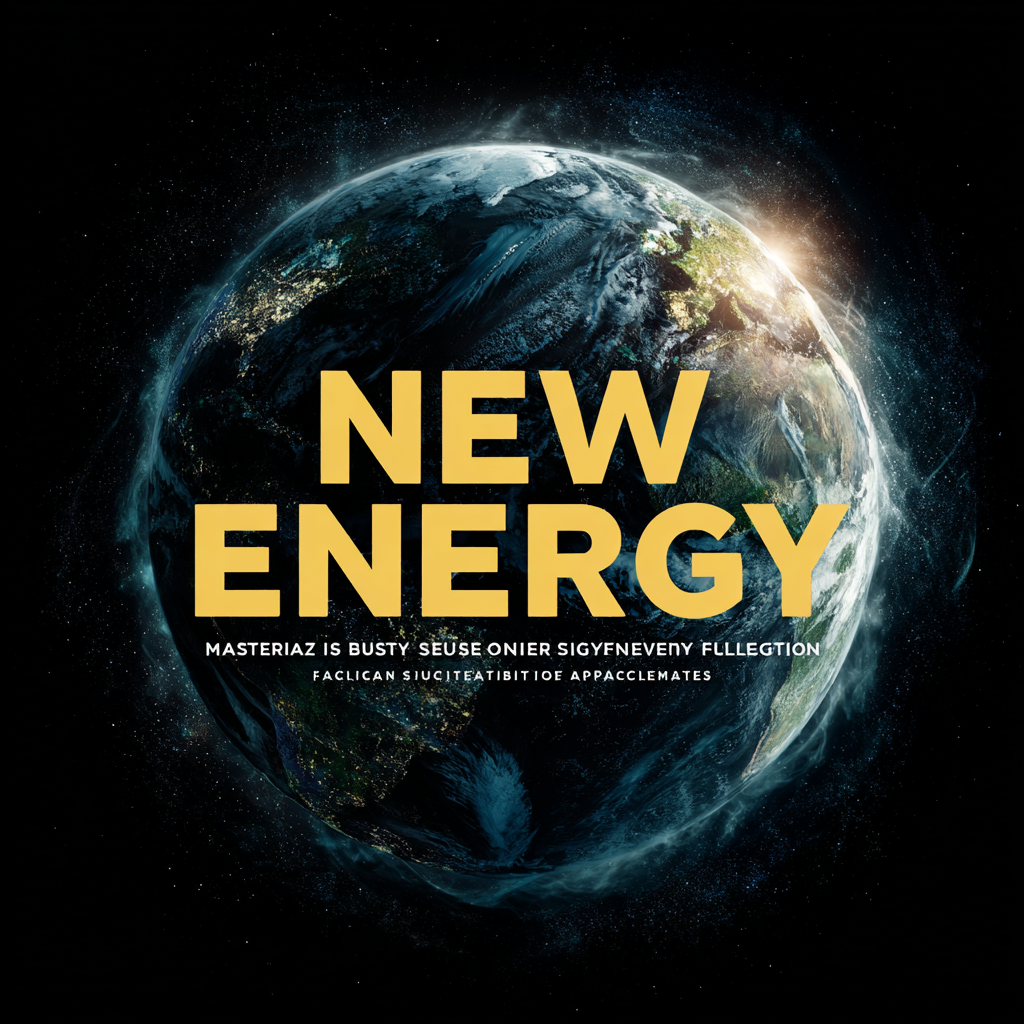As the world grapples with the urgent need for sustainable energy solutions, the concept of "New Energy" emerges as a beacon of hope for the future. According to a recent report by the International Renewable Energy Agency (IRENA), global investment in renewable energy reached $500 billion in 2021, reflecting a growing commitment to reduce carbon emissions and combat climate change.
 The transition to new energy sources, including solar, wind, and hydrogen, is critical, as these technologies have the potential to provide over 80% of the world's energy needs by 2050. Moreover, a study by BloombergNEF predicts that the energy transition could unlock $13 trillion in economic opportunities by 2030. This blog will explore the best new energy solutions that are shaping sustainable applications, highlighting innovative strategies and technologies that not only promise environmental benefits but also drive economic growth.
The transition to new energy sources, including solar, wind, and hydrogen, is critical, as these technologies have the potential to provide over 80% of the world's energy needs by 2050. Moreover, a study by BloombergNEF predicts that the energy transition could unlock $13 trillion in economic opportunities by 2030. This blog will explore the best new energy solutions that are shaping sustainable applications, highlighting innovative strategies and technologies that not only promise environmental benefits but also drive economic growth.
In our quest for a sustainable tomorrow, innovative energy technologies play a pivotal role in transforming our energy landscape. From solar advancements that enhance efficiency to wind turbines that harness the power of nature with unprecedented efficacy, the new generation of energy solutions is reshaping how we produce and consume power. These technologies not only aim to reduce carbon emissions but also seek to ensure that energy is accessible and affordable for all.
Moreover, the rise of energy storage systems, such as advanced lithium-ion batteries and emerging solid-state technologies, offers a promising way to tackle the intermittent nature of renewable energy sources. By efficiently capturing and storing energy generated from renewables, we can maintain a steady supply even during peak demand. Meanwhile, smart grids are revolutionizing energy distribution by utilizing digital communication to optimize electricity flow, enhancing reliability and efficiency in our energy systems. As we explore these innovative energy technologies, we pave the way toward a sustainable future that prioritizes environmental stewardship and energy equity.

Digitalization is reshaping the energy landscape, enhancing energy efficiency and sustainability through innovative technologies. As industries embrace digital transformation, solutions such as digital twin technology are becoming vital in optimizing energy use and improving indoor environmental quality. These digital tools enable real-time monitoring and management of energy consumption, allowing for more precise adjustments that lead to reduced waste and lower emissions.

Moreover, the integration of digitalized processes in supply chains is crucial for enhancing corporate sustainability. By implementing smart technologies, companies can identify inefficiencies, streamline operations, and foster innovative practices that contribute to a sustainable future. The shift towards a circular economy is supported by digitalization, guiding organizations in their transition to carbon-neutral models while addressing the pressing challenges of climate change.
This convergence of digital solutions and energy management not only mitigates environmental impacts but also drives economic growth through increased operational resilience and sustainability.
As the world grapples with pressing global challenges such as climate change, energy shortages, and environmental degradation, renewable energy solutions emerge as vital players in the quest for sustainability. Among these technologies, solar, wind, and hyroelectric power stand out for their ability to harness natural resources and provide clean energy. By transitioning to these sources, countries can significantly reduce greenhouse gas emissions and strengthen energy security, which is crucial for achieving long-term environmental goals.
Moreover, the implementation of innovative energy solutions like bioenergy and geothermal systems offers a multifaceted approach to addressing the world's energy demands. Bioenergy, derived from organic materials, not only contributes to waste reduction but also provides a dependable energy source. Meanwhile, geothermal energy taps into the Earth's heat, offering a consistent and reliable energy output. As nations assess the broader impacts of these renewable technologies, their potential to tackle economic disparity and enhance resilience in the face of climate-related challenges becomes increasingly clear. By prioritizing these solutions, we can pave the way for a sustainable future that benefits both people and the planet.
The integration of smart grids is revolutionizing energy distribution and consumption, paving the way for a sustainable future. With advancements in technology, such as the incorporation of Internet of Things (IoT) devices and artificial intelligence, smart grids are becoming essential for optimizing energy management. The Americas smart grid market is projected to grow significantly, with an expected size of around USD 217.7 billion by 2033, escalating at a CAGR of 16.4% from USD 40.6 billion in 2023. This rapid growth is a testament to the increasing demand for efficient energy systems as societies shift towards renewable energy sources.
In India, where the energy grid has a capacity of 250 GW, smart grid technology takes on greater significance. The integration of innovative frameworks for real-time adaptive resource allocation enables better grid optimization, crucial for handling the demands of renewable energy sources. The potential for smart grids to facilitate a smoother transition to a sustainable energy future is underscored by ongoing efforts to enhance grid capabilities. By embracing these technologies, energy stakeholders can create a more resilient and sustainable power distribution system, ensuring efficient energy consumption for generations to come.
The energy storage market is rapidly evolving, with impressive growth forecasted for innovative solutions like supercapacitors and specialty gas cylinders. In 2024, the
supercapacitor market is projected to reach an astonishing $722.6 million, and it is expected to soar to $2.7 billion by 2032, reflecting a compound annual growth rate (CAGR) of 17.92%. This surge highlights the increasing demand for efficient energy storage technologies that support sustainable practices and the integration of renewable energy sources.
In parallel, the specialty gas cylinder market is also set to expand, anticipated to grow from $506.3 million in 2024 to $822.8 million by 2032, with a CAGR of 6.26%. As industries and consumers seek cleaner energy options, these markets will play a critical role in providing the necessary infrastructure for a sustainable future.
Tips: When considering energy solutions, prioritize investing in technologies that have scalability and adaptability to emerging trends. Additionally, keep an eye on smart building innovations that leverage IoT and machine learning to enhance energy efficiency and sustainability. Embracing these changes now can position you favorably in the evolving market landscape.